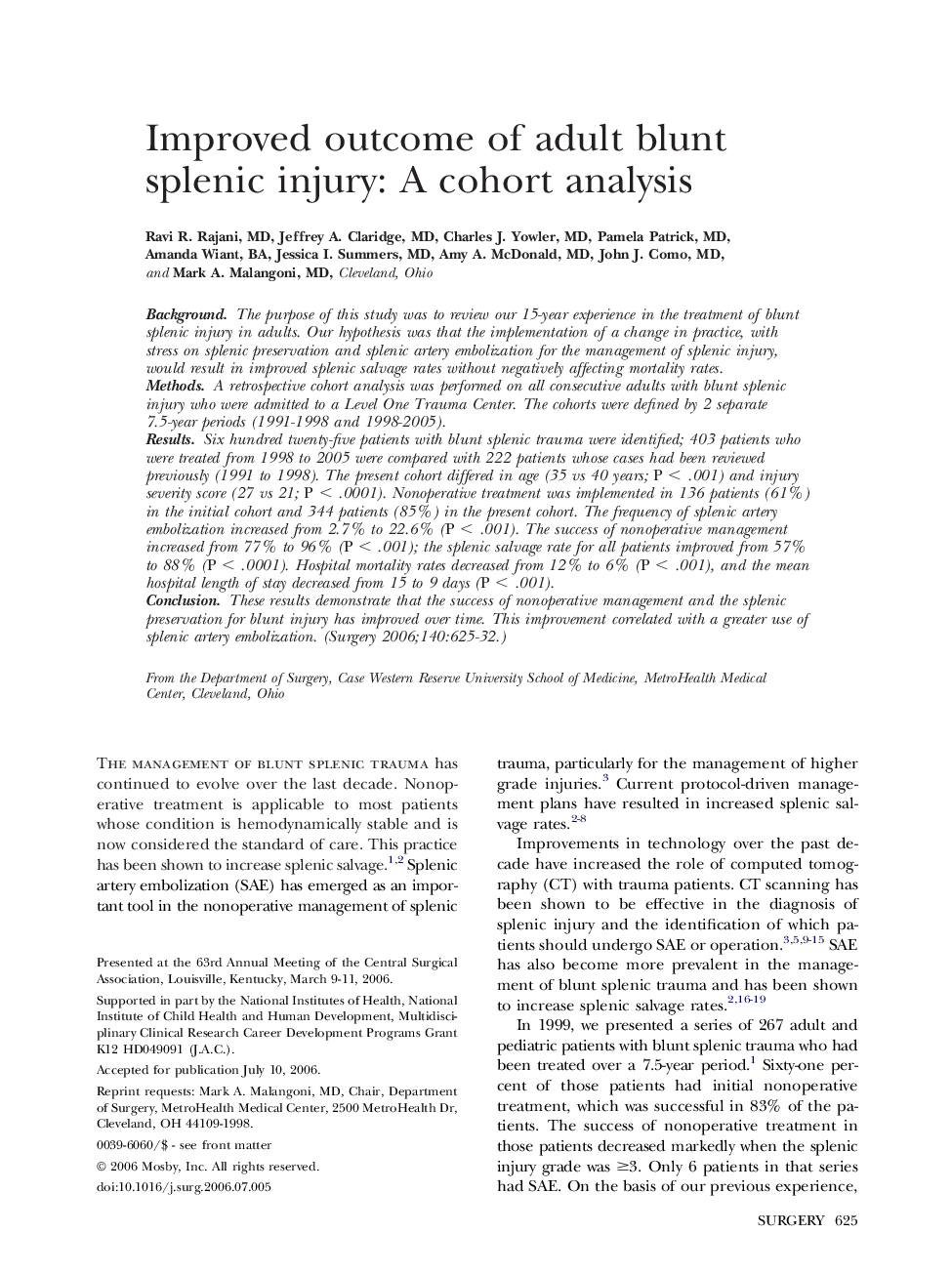| Article ID | Journal | Published Year | Pages | File Type |
|---|---|---|---|---|
| 4309976 | Surgery | 2006 | 8 Pages |
BackgroundThe purpose of this study was to review our 15-year experience in the treatment of blunt splenic injury in adults. Our hypothesis was that the implementation of a change in practice, with stress on splenic preservation and splenic artery embolization for the management of splenic injury, would result in improved splenic salvage rates without negatively affecting mortality rates.MethodsA retrospective cohort analysis was performed on all consecutive adults with blunt splenic injury who were admitted to a Level One Trauma Center. The cohorts were defined by 2 separate 7.5-year periods (1991-1998 and 1998-2005).ResultsSix hundred twenty-five patients with blunt splenic trauma were identified; 403 patients who were treated from 1998 to 2005 were compared with 222 patients whose cases had been reviewed previously (1991 to 1998). The present cohort differed in age (35 vs 40 years; P < .001) and injury severity score (27 vs 21; P < .0001). Nonoperative treatment was implemented in 136 patients (61%) in the initial cohort and 344 patients (85%) in the present cohort. The frequency of splenic artery embolization increased from 2.7% to 22.6% (P < .001). The success of nonoperative management increased from 77% to 96% (P < .001); the splenic salvage rate for all patients improved from 57% to 88% (P < .0001). Hospital mortality rates decreased from 12% to 6% (P < .001), and the mean hospital length of stay decreased from 15 to 9 days (P < .001).ConclusionThese results demonstrate that the success of nonoperative management and the splenic preservation for blunt injury has improved over time. This improvement correlated with a greater use of splenic artery embolization.
